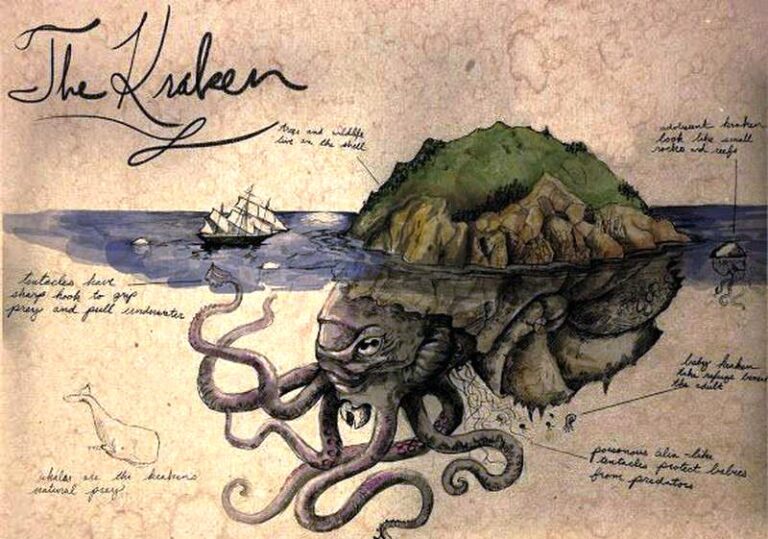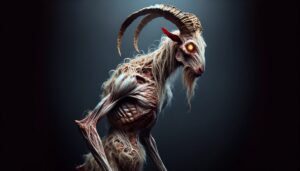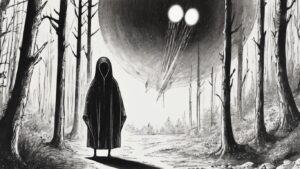Table of Contents
What is the Kraken?
Off the rugged coast of Norway, beneath the dark depths of the ocean’s abyss, slumbers a colossal and enigmatic beast known as the Kraken. This legendary creature has captured the imagination of seafarers and storytellers for centuries, leaving an indelible mark on maritime folklore. The Kraken, with its imposing characteristics, a curious blend of physical attributes, and an aura of both lethargy and menace, stands as a testament to the allure of sea legends.
Characteristics
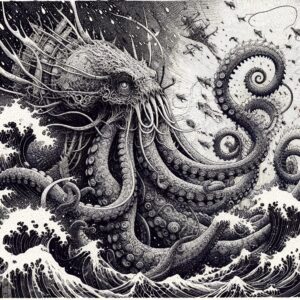
In its physical description, the Kraken’s earliest accounts shroud it in mystery, with a primary focus on the sheer enormity of the creature. Described as “the hugest monster in the sea,” it is a titanic being with the capability of swallowing entire ships and even whales. Its colossal size gives rise to illusions, where its body masquerades as land, its mouth takes on the appearance of the entrance to a sound, and its teeth loom like formidable boulders. Remarkably, the Kraken’s mere movement is said to provoke the formation of perilous whirlpools.
Over time, descriptions of the Kraken have evolved, painting a more vivid picture of this maritime monstrosity. It is often depicted with a flat body, occasionally emerging from the water in humps resembling small islands. Its most distinctive feature is a multitude of long, flexible arms, often referred to as horns, which can extend to the height of a ship’s mast. The Kraken’s presence is frequently accompanied by the emergence of giant circular waves and swarms of terrified fish. In modern depictions, the Kraken is envisioned as a colossal octopus, a massive crab, or a hybrid of these nightmarish forms.
Personality
While the Kraken possesses the ability to create destructive whirlpools and engulf entire ships, it is not inherently malevolent towards humans. In contrast to other sea monsters, the Kraken displays little interest in actively hunting humans. Most encounters with the Kraken resulting in sailors meeting a watery end were likely due to their inability to evade the creature’s colossal form.
The Kraken is, in essence, a lethargic and dormant creature, spending the majority of its existence in a deep slumber on the ocean floor. Even when it awakens and ascends from the depths in search of sustenance, its hunting strategies are characterized by passivity. However, there are accounts of the Kraken attacking ships, typically triggered by disturbances caused by passing vessels. In such instances, the Kraken can exhibit ferocity and ruthless destruction, reducing ships to mere splinters without regard for human life.
Special Abilities
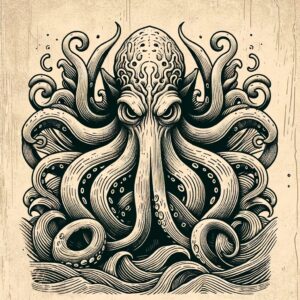
Despite its laziness, the Kraken’s colossal size grants it exceptional power. Its unique hunting strategy involves recycling waste through vomiting or excreting into the water, creating a turbid environment. This muddiness attracts other fish, which gather above the Kraken, unknowingly becoming its prey. Using its long arms, it seizes and swallows them, effectively converting them into bait for other fish of the same kind. This method is ingenious and efficient, explaining why Nordic fishermen would brave the Kraken’s presence to partake in the bounty it attracted.
Beyond its distinctive hunting strategy, the Kraken possesses other remarkable abilities. Its movement can generate powerful whirlpools, capable of pulling entire ships into the depths. Additionally, it can emit vocal calls that trigger underwater earthquakes, adding another layer of terror to its already formidable arsenal.
Cultural Representation
Origin: The first known description of the Kraken dates back to 1180, credited to the King of Norway. Over centuries, the legend of this colossal creature grew, becoming a part of early Norse sagas like the Orvar-Oddr. In the mid-thirteenth century, naturalists and scholars started exploring the Kraken, with the Konungs Skuggsja offering additional details on its appearance and diet. Even prominent scientists like Carl Linnaeus, well into the eighteenth century, incorporated the Kraken into their classifications of sea creatures.
Explanation
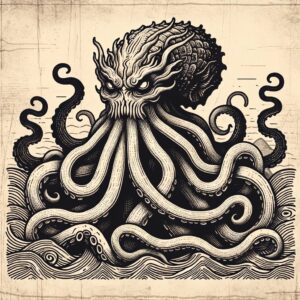
While modern science has discredited a mile-long ocean monster, it led to the discovery of the giant squid, akin to the Kraken. These elusive giants inhabit Norwegian waters, growing up to 42 feet long, like seven or eight men in line. They, like the Kraken, dwell at the ocean’s depths and prey on fish, leaving scars on sperm whales, their main predators. Remarkably, giant squids can expel dark ink, reminiscent of the Kraken’s “muddy” substance believed to attract fish.
In essence, though the colossal Kraken of legend has faded, its influence endures in marine biology, with the giant squid serving as a testament to sea legends’ enduring allure.
Modern culture
Renowned authors and storytellers eagerly embraced the allure of the Kraken, infusing their literary works with its mythical might and mystique. Among these literary luminaries was Alfred Tennyson, whose evocative poems transported readers to the depths of the sea, where the Kraken lay in its timeless slumber. Tennyson’s verses added a layer of romanticism to the creature, casting it as a guardian of the ocean’s mysteries.
In the realm of American literature, Herman Melville’s magnum opus, “Moby Dick,” featured a subtle yet impactful encounter with the Kraken. While not the central focus of the narrative, the Kraken’s presence resonated as a symbol of the ocean’s unfathomable depths and the formidable challenges faced by seafaring adventurers. Melville’s masterful storytelling ensured that the Kraken left an indelible mark on readers.
Jules Verne, the pioneering father of science fiction, paid homage to the Kraken’s enduring mystique in his classic work, “Twenty Thousand Leagues Under the Sea.” Within the confines of Captain Nemo’s enigmatic Nautilus, readers embarked on a journey where the lines between science and fantasy blurred. The Kraken, with its monstrous allure, served as a testament to the uncharted wonders concealed beneath the ocean’s surface.
In the modern era, the Kraken remains a beloved figure in popular culture. Blockbuster films like “Pirates of the Caribbean” feature the Kraken as a formidable antagonist. “Clash of the Titans” highlights its colossal power. “Game of Thrones” includes memorable sea battles with Kraken-like creatures. These cinematic appearances keep the Kraken myth captivating audiences worldwide, showcasing the enduring power of folklore and human imagination.
FAQ
Is the Kraken a real creature?
No, the Kraken is a mythical sea monster and does not exist in reality.
What is the origin of the Kraken legend?
The Kraken legend originated in maritime folklore and was popularized in literature and storytelling.
Does the Kraken appear in modern popular culture?
Yes, the Kraken has made appearances in movies, TV shows, and literature, solidifying its status as an enduring figure in popular culture.
Is the giant squid related to the Kraken?
The giant squid is often associated with the Kraken due to its enormous size, but the Kraken itself is purely mythical.
What are some famous literary works featuring the Kraken?
Notable works include Alfred Tennyson's poems, Herman Melville's "Moby Dick," Jules Verne's "Twenty Thousand Leagues Under the Sea," and H.P. Lovecraft's "Call of Cthulhu."
How does the Kraken compare to other sea monsters?
The Kraken is known for its colossal size, ship-swallowing abilities, and unique mythological characteristics, setting it apart from other sea monsters.
Has modern science discovered any real-life creatures resembling the Kraken?
While the Kraken itself is fictional, the giant squid, with its large size and deep-sea habitat, bears some resemblance to the legendary monster.
